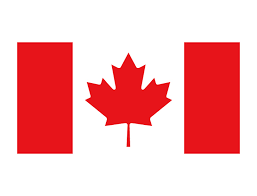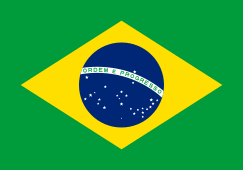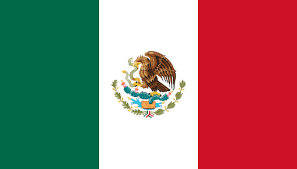Popular Searches
Popular Searches


用戶 48...40 剛剛查看了 HKD/ CNY exchange rate


用戶 91...92 剛剛查看了 HKD/ USD exchange rate


用戶 53...82 剛剛查看了 HKD/ JPY exchange rate


用戶 71...60 剛剛查看了 HKD/ PHP exchange rate


用戶 63...80 剛剛查看了 HKD/ AUD exchange rate


用戶 87...93 剛剛查看了 HKD/ EUR exchange rate


用戶 82...21 剛剛查看了 HKD/ CAD exchange rate


用戶 99...44 剛剛查看了 HKD/ GBP exchange rate


用戶 65...47 剛剛查看了 HKD/ CHF exchange rate


用戶 25...16 剛剛查看了 HKD/ IDR exchange rate


用戶 83...60 剛剛查看了 HKD/ TWD exchange rate
Recommended Money Changers
Money changers or bank with the best exchange rates.

Little Girl Exchange
VND/HKD
0.000308
57分前匯率
Explore more

Rich Bird HK Money Changer
RUB/HKD
0.07
18小時前匯率
Explore more

Ngau Kee Money Changer
VND/HKD
0.0003
3小時前匯率
Explore more

Gold Town Money Exchange (Kwun Tong Branch)
VND/HKD
0.000301
5小時前匯率
Explore more
Money Changers Near Me
Find money exchange store near you. Compare the latest exchange rates of 755 exchange store in Hong Kong.
Hong Kong Island
PFCE Limited | Little Girl Exchange | GME HK Money Exchange | Expro Ltd | Tony Foreign Exchange | Ji Xiang Exchange (Sheung Wan Branch) | KVB Kunlun | Trust Pass Exchange |
Explore more
Kowloon
Crazy Bird Money Exchange | Loyal Company Money Changer | Sheng En HK Money Changer | Rich Bird HK Money Changer | Kin Shing Exchange Limited | Capital Exchange | Earth Remit Limited | Digital Forex |
Explore more
New Territories
Ngau Kee Money Changer | DonkiFX Money Exchange | Global Exchange | Travelex (Airport Branch 6E197) | BCA Finance Limited | BCA Finance Limited | CHANDRA | Aizhuowen |
Explore more
Popular Currencies
Supports 86 currencies, check exchange rates anytime, anywhere.
FAQs
For more assistance, please contact WhatsApp.
What services does PassTo provide?
PassTo is the simplest solution for finding and comparing currency exchange rates. It provides real-time quotes from banks and currency exchange dealers. PassTo updates exchange rate quotes from nearby money changers and banks in real-time, making it easy for you to find the latest and best rates for cash exchange nearby.
I am the owner of money exchange store. How can we join as Passto's quoting partners?
Please contact us via WhatsApp (+44 7491771091) and we will arrange for a dedicated person to follow up with you.
What is PassTo partner merchants?
Merchants with certification labels are merchants who have entered into special cooperation with the platform. They will be stationed in merchant customer service and provide real-time online consultation services. Such merchants have conducted real exchange cooperation with the platform and have higher transaction security guarantees.
31Can TP1T make an appointment for redemption with merchants directly through the PassTo platform?
In contact with merchants, please stay tuned...
How to find the most suitable currency exchange merchant?
You can determine which exchange merchant to choose based on the following dimensions: exchange rate price, distance, etc. Additionally, we provide two ways to help you find a suitable exchange merchant:1) Exchange - select the currency pair you want to exchange and view the list of merchants that offer exchange services. Choose a suitable merchant;2) Map - select the currency pair you want to exchange and view the location of merchants who offer exchange services on the map, as well as their quotes and distances. Choose a suitable exchange merchant.
5、 How to view the exchange rate and convertible quantity of the target currency pair
Switch to the exchange or map page, select the currency you have in hand and the currency you want to receive/pay. You can then view the best exchange rate provided by merchants included on our platform, as well as the amount of currency you will receive/pay. If a merchant is able to provide an exchange service for the currency you have selected, it will be displayed in the merchant list. The platform will calculate the amount of currency you will receive/pay based on the exchange rate published by merchants.
Where do PassTo's merchant quotes come from?
PassTo's merchants include currency exchange shops and banks, and their exchange rates are derived from collecting and organizing the rates published by merchants through various channels. As currency exchange rates fluctuate, the exchange rates displayed by PassTo's merchants are for reference only. The actual exchange rate will be based on the rate displayed at the merchant's store after arrival.

選擇貨幣
最近

HDK
Hong Kong dollarall

AUD
Australian dollar
AED
United Arab Emirates dirhamAFN
AfghaniAMD
Armenian DramANG
Dutch Antillean guilderAOA
Angolan KwanzaARS
Argentine pesoAWG
Aruban FlorinAWG
Aruban FlorinAZN
Azerbaijan Manat
BND
Brunei dollar
BRL
Brazilian Real
BHD
bahraini dinar
BDT
Bangladeshi TakaBAM
Bosnia-Herzegovina convertible markBBD
barbados dollarBGN
Bulgarian levBIF
Burundian francBMD
Bermuda dollarBOB
bolivianoBSD
Bahamian dollarBWP
Botswana Pula
CNY
RMB
CAD
Canadian dollar
CHF
swiss franc
CNH
offshore renminbi
CLP
Chilean Peso
CZK
czech korunaCDF
Congolese francCOP
Colombian pesoCRC
Costa Rican Colon
DKK
Danish Krone
EUR
EUREGP
egyptian pound
FJD
Fiji dollar
GBP
GBPGEL
Georgia LarryGHS
Ghanaian CediGNF
guinean franc
HKD
Hong Kong dollar
HUF
Hungarian ForintHRK
Croatian Kuna
IDR
Indonesian rupiah
ILS
Israeli Shekel
INR
Indian Rupee
JPY
JPY
JOD
Jordanian dinar
KRW
won
KZT
Kazakhstan tenge
KWD
Kuwaiti DinarKES
Kenyan shillingKRW
won
LKR
Sri Lankan rupeeLAK
Lao kip
MOP
Macau Pataca
MYR
Malaysian ringgit
MNT
Mongolian Tugrik
MUR
Mauritian Rupee
MXN
mexican pesoMAD
Moroccan dirhamMMK
Myanmar Kyat
NZD
new zealand dollar
NOK
norwegian krone
NPR
nepalese rupeeNGN
Nigerian Naira
OMR
Omani rial
PHP
Philippine peso
PKR
pakistan rupee
PGK
Papua New Guinea Kina
PLN
polish zloty
QAR
Qatari Rial
RUB
russian rubleRON
Romanian Leu
SGD
singapore dollar
SEK
swedish krona
SAR
riyal
THB
baht
TWD
New Taiwan dollar
TRY
turkish lira
TJS
Somoni, TajikistanTZS
Tanzanian shilling
USD
DollarUAH
Ukrainian hryvniaUGX
Ugandan shillingUYU
Uruguayan peso
VND
vietnamese dong
ZAR
south african randZMW
zambian kwacha
篩選商家
地區
全部
中西區
東區
南區
灣仔區
九龍城區
深水埗區
油尖旺區
黃大仙區
觀塘區
北區
西貢區
大埔區
沙田區
元朗區
屯門區
荃灣區
葵青區
離島區









